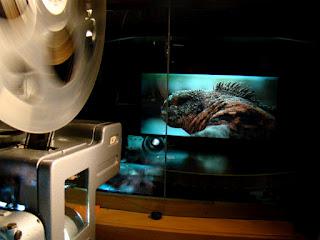
We all have seen movie tags like DVDRip, x264, DVDScr but more often than not never knew what they meant. So I thought about collecting a few useful information about them so that the next time you encounter a movie tag you would know what's inside.
The tag is a part of the name of the release. These release names give you information about the release instantly. If you want you can find more detailed information written in the nfo file. I have tried to uncover most of the tags, but if I have missed out any, feel free to leave them in the comment section.
SCR (Screener)
A pre VHS tape which is sent to rental stores, and various other places, purely for promotional purposes. It is supplied on a VHS tape which is usually in a 4:3 (full screen) a/r format, although letterboxed screeners are also found in certain rare cases. A screener consists of a "ticker" which is a message that scrolls past at the bottom of the screen, with the copyright and anti-copy telephone number. Usually a good screener blocks this ticker and if the VHS tape contains any serial numbers, or any other markings that could lead to the source of the tape, those are also blocked by masking it with a black mark over that section. This is sometimes only for a few seconds but unfortunately on some copies this will last for the entire film, and some of these tickers can be quite big. Depending on the equipment used, screener quality can range from excellent if done from a MASTER copy, to very poor if done on an old VHS recorder through poor capture equipment on a copied tape. Most screeners are transferred to VCD, but a few attempts at SVCD have occurred, some looking better than others.
CAM/CAMRip
A cam is movie which has been recorded from theater, usually done with a digital video camera. A good quality CAMRip uses a mini tripod is sometimes used which prevents the camera from shaking. The quality of a CAMRip also depends on the seating arrangement and it might be filmed from an angle. Although if cropped properly, this is hard to tell unless there’s text on the screen, but a lot of times these are left with triangular borders on the top and bottom of the screen. The sound is recorded using the onboard microphone of the camera, and especially in comedies, the laughter of the audience can often be heard during the film. Due to these factors, the picture and sound quality are usually quite poor.
DVDScr (DVD Screener)
Same as that of a screener, but recorded off a DVD instead of a 70mm screen. It is usually in letterbox format, but without the extras that a DVD retail would contain. The ticker is not usually in the black bars, and will disrupt the viewing. If the ripper has any skill, a DVDscr should be very good. A DVDScr is usually transferred to SVCD or DivX/XviD.
Asian Silvers/PDVD
These are films put out by eastern bootleggers, and these are usually bought by some groups to put out as their own. Silvers are very cheap and easily available.
Watermarks
A lot of films come from Asian Silvers/PDVD and these are tagged by the people responsible. The tag is usually in the form of a letter/initials or a little logo, generally in one of the corners. Most famous are the "Z", "A" and "Globe" watermarks.
TS (Telesync)
It has the same specifications as that of a CAMRip except it uses an external audio source which is most likely to be an audio jack in the chair for hard of hearing people. A direct audio source does not ensure a good quality audio source, as a lot of background noise can interfere. A lot of the times a telesync is filmed in an empty cinema or from the projection booth with a professional camera, giving a better picture quality. The quality of a Telesync ranges drastically. A high percentage of Telesyncs are CAMs that have been mislabeled. (to be continued)
